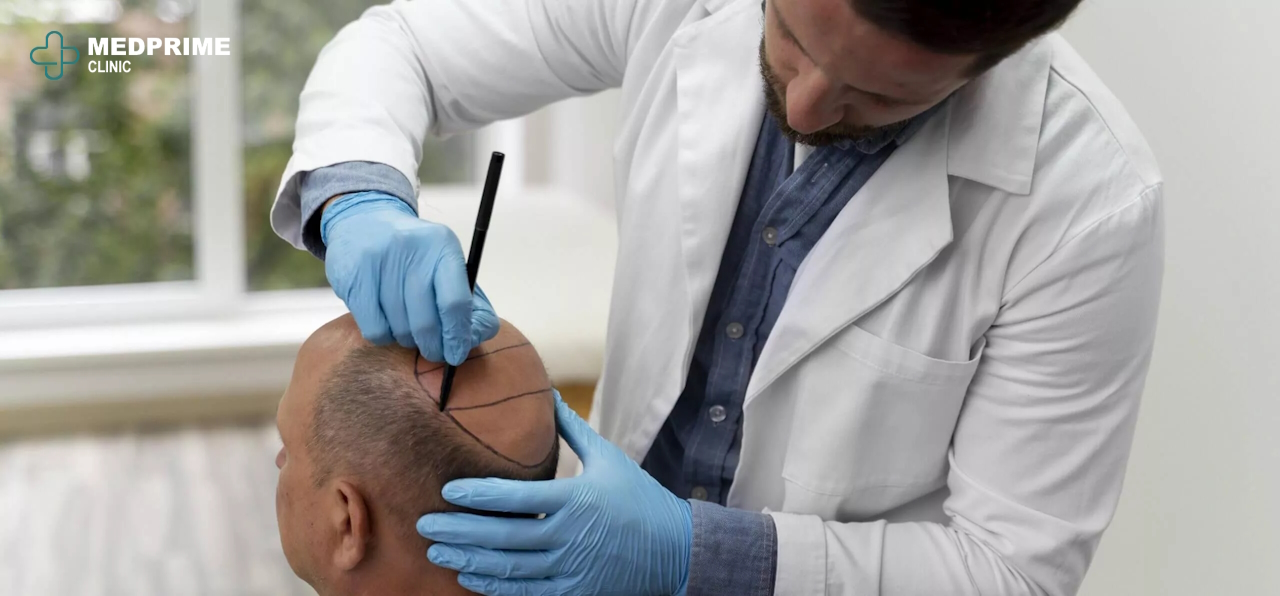Undergoing a hair transplant is a significant decision that can bring about a transformative change in your appearance and self-confidence. As you embark on this journey, it's crucial to have a clear understanding of the recovery process. In this guide, we'll take you through what to expect day by day during your hair transplant recovery, ensuring you're well-prepared for the journey ahead.

Day 1 - Post-Procedure
Immediately after your hair transplant procedure, you may experience some mild discomfort, including soreness and a tight sensation around the treated area. The newly transplanted grafts will be delicate, and you'll need to be cautious not to touch or disturb them.
Day 2 - Washing Your Scalp
Your surgeon will provide instructions on when and how to wash your scalp after the procedure. Generally, you'll be advised to gently cleanse the recipient area using a prescribed shampoo. Be sure to follow their guidelines meticulously to promote proper healing.
Day 3 to 7 - Healing Begins
During this period, you might notice small scabs forming around the transplanted grafts. This is a natural part of the healing process. It's crucial to resist the urge to pick at these scabs, as doing so can disrupt the healing and potentially affect the outcome of the transplant.
Day 8 to 10 - Shedding of Transplanted Hair
Don't be alarmed if you notice the transplanted hairs shedding during this phase. This is a normal occurrence and part of the hair growth cycle. The transplanted follicles are establishing themselves, and new hair growth will begin in the coming months.
Day 11 to 14 - Gradual Improvement
As the days progress, you'll likely experience a reduction in any residual discomfort. Swelling and redness around the treated area should also start to diminish. It's important to follow any post-operative care instructions provided by your surgeon to ensure a smooth recovery.
Week 2 to 4 - Patience and Care
During this period, you might feel anxious about the shedding of the transplanted hair. Remember that this shedding is temporary, and the new hair growth will begin soon. Continue to follow your surgeon's instructions regarding washing and caring for your scalp.
Week 5 to 8 - New Hair Growth
Around week 5, you'll start to notice small signs of new hair growth. Initially, these hairs might be fine and thin, but they will gradually thicken over time. This is an exciting phase, as it marks the beginning of the transformation you've been waiting for.
Month 3 to 6 - Visible Improvement
By month 3, the newly transplanted hairs will continue to grow and thicken, becoming more noticeable. However, keep in mind that the full results of the transplant might not be evident until around 6 to 12 months post-surgery.
Beyond 6 Months - Patience Rewarded
As you approach the 6-month mark and beyond, you'll likely experience a substantial improvement in the appearance of your hairline and overall coverage. The transplanted hairs will continue to mature and blend seamlessly with your existing hair.
1 Year and Beyond - Final Results
Around the 1-year post-operative mark, you should be enjoying the full benefits of your hair transplant. Your hair will have grown, thickened, and taken on a more natural appearance. Regular follow-up appointments with your surgeon can help ensure that your results are progressing as expected.
In conclusion, understanding the hair transplant recovery process is vital to managing your expectations and ensuring a successful outcome. By being patient, following your surgeon's post-operative instructions, and embracing each phase of the journey, you'll be well on your way to enjoying the results of your hair transplant.
Hair Transplant Recovery